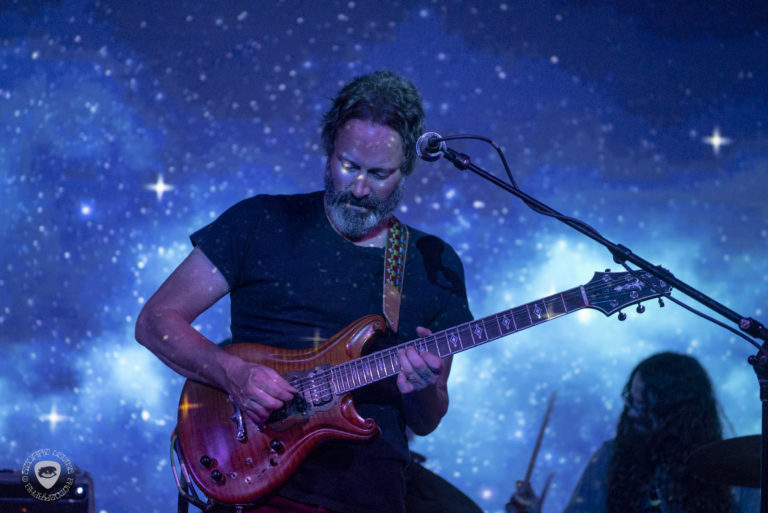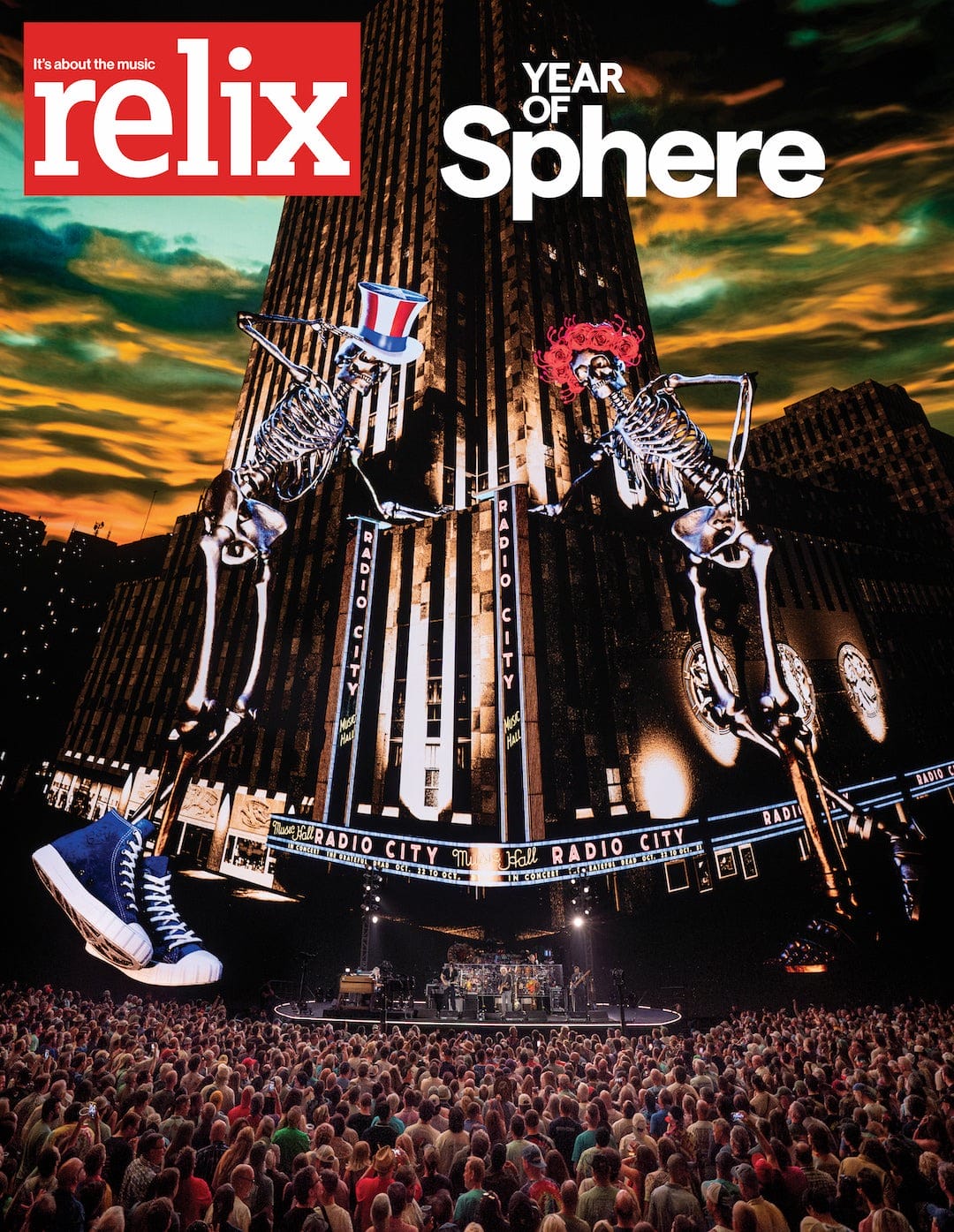Neal Casal: Hallucinating a Solution for Fare Thee Well (Relix Revisited)

photo by Stuart Levine
One year ago, today Neal Casal passed away. In his memory we revisit this conversation with him that took place in conjunction with the official release of his first recordings with Circles Around the Sun. Casal assembled the group for the purpose of creating setbreak music for the 2015 Fare Thee Well shows.
The Fare Thee Well shows in Santa Clara, Calif., and Chicago offered audiences much more than stirring live music. Justin Kreutzmann produced and directed five special films that screened in between sets, incorporating archival photos and footage of the Grateful Dead. For these presentations, Chris Robinson Brotherhood guitarist Neal Casal created a unique soundtrack, delivering nearly five hours of original music recorded live at Castaway 7 Studios in Ventura, Calif. Engineer JP Hessser captured the sessions, which also featured CRB keyboard player Adam MacDougall, bassist Dan Horne (Beachwood Sparks, Jonathan Wilson) and drummer Mark Levy (The Congress). Casal admits that he has been taken aback by the acclaim that he’s received for the music, which may be released in some official form later this fall.
How did Justin come to tap you to work on this project?
Justin and I met once or twice when I used to play with Ryan Adams about 10 years ago, but we came to be friends through the Move Me Brightly project in 2012. We share a similar sense of gallows humor, and we just hit it off very quickly and became fast friends during the chaos of Move Me Brightly. That led to Justin asking me to compose the score for the Bob Weir documentary The Other One and, after that, he asked me to do the music for the screens during the Fare Thee Well shows.
Did you understand the scope of your commitment from the get-go? Did Justin say, “OK, I need you to create five hours of music?”
I don’t think Justin had done the math on how much music would be required. [Laughs.] He just wanted me to make the music for him, and his preference was to not have any repeated music—kind of like a run of Dead shows where they never played the same song twice. Justin wanted to have original music for all five shows: both Santa Claras and all three Chicagos. When I did the math and figured out how much music that would be, it was an astounding four-and-a-half to five hours. But I enjoy a challenge so I decided to go for it and, amazingly, we came up with something that has struck a chord with people, which is a bit of a shock to me.
Did you enter the studio with any preconceived themes or ideas?
No, it was a complete kamikaze operation. I had a rough set of guidelines from Justin about some rhythms that he’d like to hear—just some musical settings that he’d like us to explore, but his guidelines were loose, nothing too specific. Justin asked me to make the music feel generally like the Dead vibe but not too close. Again, it was a fine line, and I think Justin asked me because it’s possible that I have an ability to do that.
I’m not going to make the claim because it could change at any moment, but that was it. This whole thing was about paying respect. This was not about my music. This wasn’t about advancing a personal agenda. It was just literally—without beating the overused term into the ground—giving back. So that’s what we ran on, and we didn’t really have time to prepare beforehand because it all fell together very quickly. Also, having to make that amount of music is so daunting that it would have taken me months to prepare music in advance. Since I didn’t have that kind of time, I just went on the trust of a great group of musicians, a great engineer and the sound of a great studio.
This was all of us going deeply into our Grateful Dead influence and bringing it forth, and trying to walk that fine line between being reverent and staying within the sounds and staying within that color palette. There is a palette of Grateful Dead musical colors that is there to work with and if you go too far outside of it, then it doesn’t feel familiar. It doesn’t feel right, but if you just mimic or if you just kind of paint by numbers, then it’s too close to the source and somehow, it undermines the mission. So there’s this really fine line that we tried to walk and a small window to try to fit ourselves through. The sensitivity of these musicians is what made it successful. We did it all in two days. We did it all live. There are no overdubs. We just caught lightning in a bottle.
Did you see any of the videos that Justin created before you went into the studio or while you were there?
That’s the other important point to make: We made the music blind. We saw none of the visuals because they weren’t finished yet. We didn’t score to the visuals. We didn’t know what people were going to be seeing. We had no idea of what the experience would be. I think what made it successful is that we worked in a void. Sometimes, that’s the best way to work.
You came up with playful titles for many of the tracks. Can you share some of those?
The title for one of the pieces is “Hallucinate A Solution,” and that was something that I heard Phil say one night. We were playing at Terrapin [Crossroads, with Phil Lesh & Friends], and one of the band members asked him how we were going to make a certain transition in the set we were about to play because Phil had an elaborate transition he wanted to make between songs. He said, “I’m not really sure. Why don’t we just hallucinate a solution as we’re playing?” And I thought, “Wow! What a fantastic title!” So “Hallucinate A Solution” is one of the titles. “Franklin’s of the World” is another very tongue-in-cheek song title. “Fakedown Street” is another self-deprecating title. This whole thing was done with reverence, respect and a sense of a humor.



















